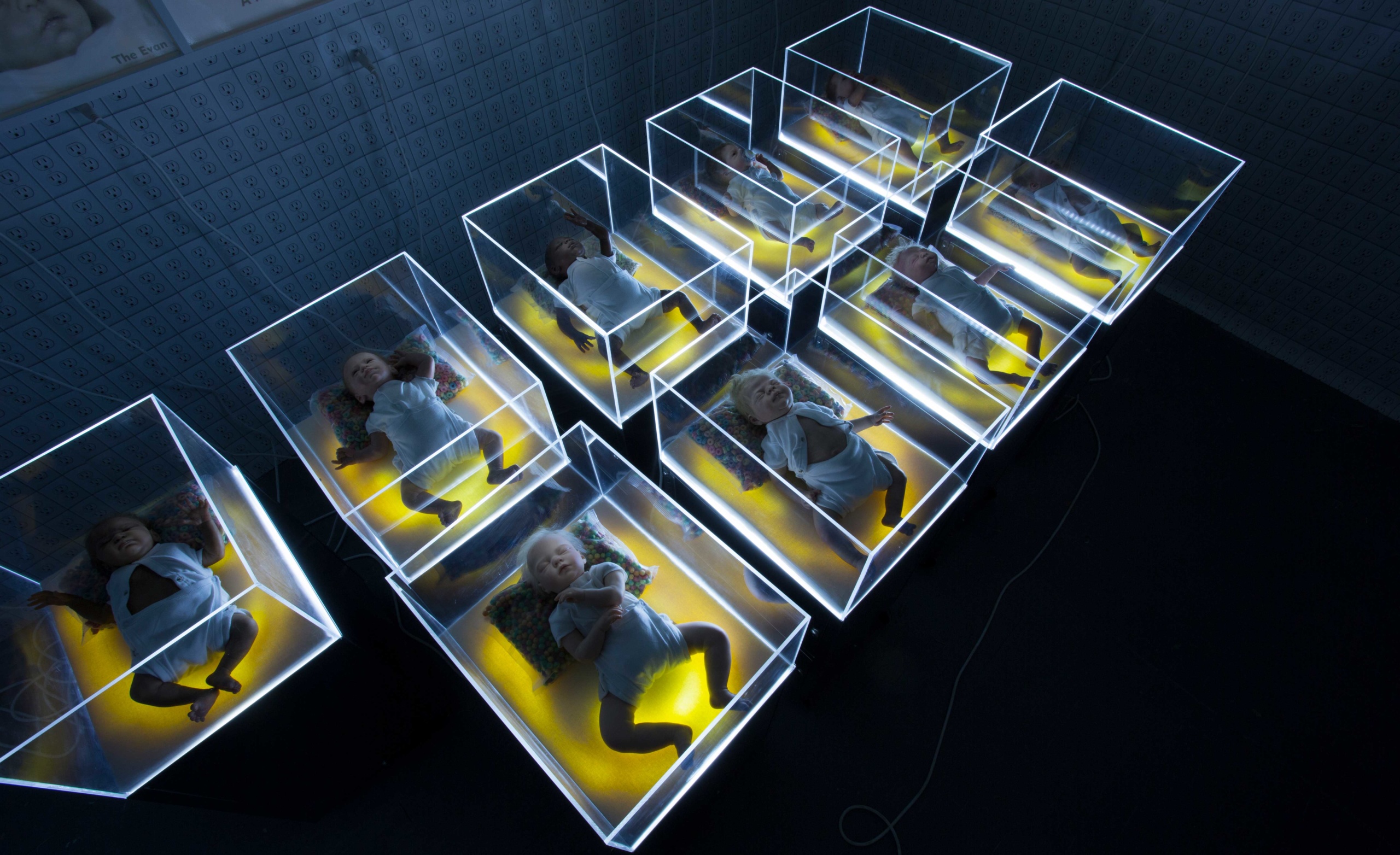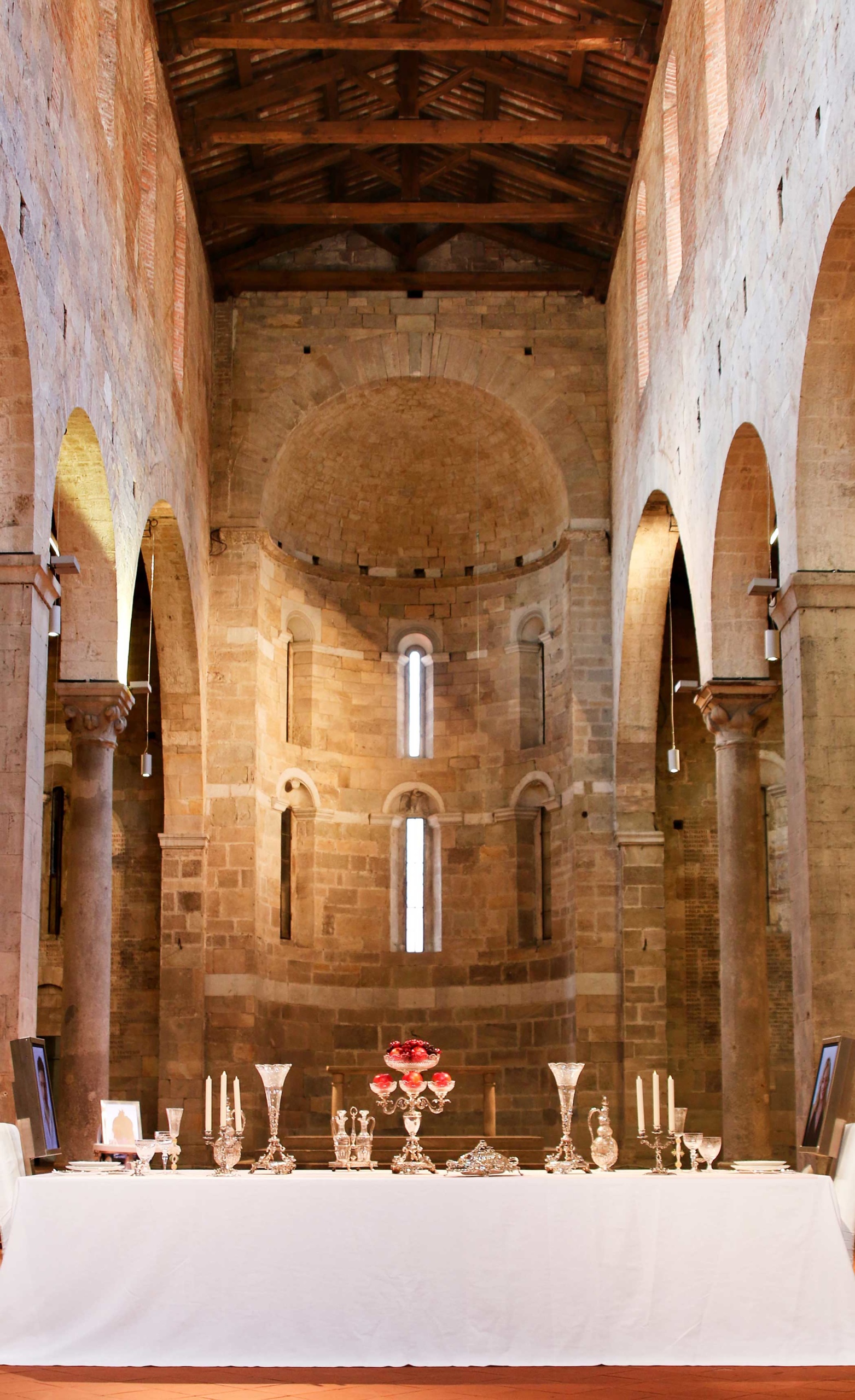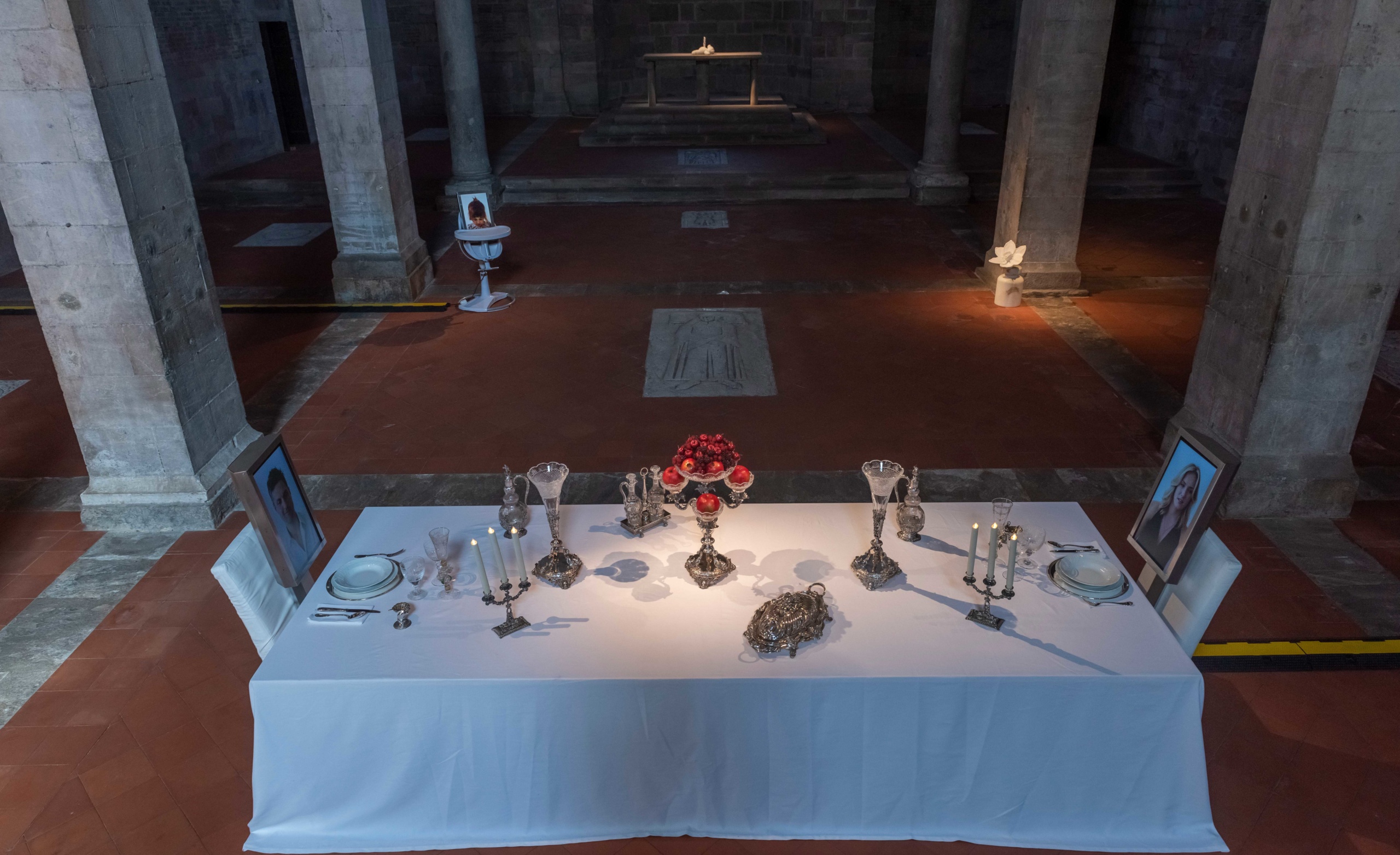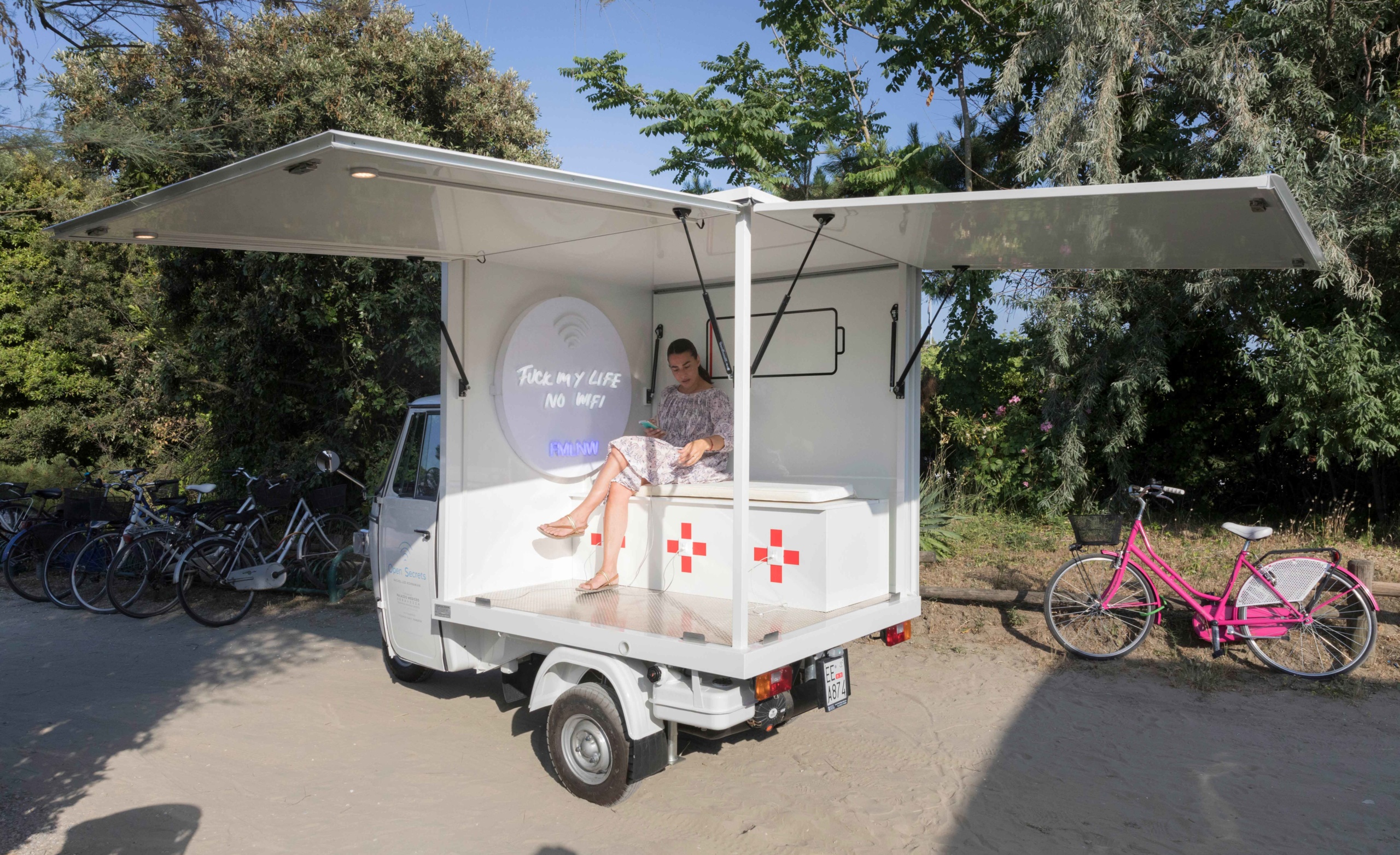
In the central nave of a Romanesque cathedral in Lucca, Italy, a very peculiar kind of dinner is taking place. Seated across from each other in soft white chairs, two guests’ heads bob on digital monitors; peering down an obstacle course of delicately wrought silver candelabras, they struggle to catch each other’s gaze. The piece, by the conceptual artist Rachel Lee Hovnanian, is featured in the exhibition “So Far So Close,” curated by Annalisa Bugliani and Alessandro Romanini, open through the sixth of September. Hovnanian’s work has long employed multimedia installation to speculate on how technology is refashioning the strictures of gender and, with them, collective ideas and experiences of beauty, loneliness and motherhood. Here, Hovnanian, has temporarily turned away from her fixation with the feminine and is looking to how the very shape of our intimacy and interrelation with each other is being rewired in the virtual world. The work, titled Dinner for Two, which is concurrently on view as part of “2020 Vision” curated by Stéphanie Roach and David Kratz at the Southampton Arts Center in New York, was completed in 2012. It undoubtedly read very differently then, as a defeated prophecy for a still far-out future in which technology’s total circumscription of our social lives would render real physical interaction perfunctory, if not obsolete.

By now, nearly eight years since the work’s inception, the experience it depicts has become commonplace and universal, although under entirely different circumstances than it seemed to predict. The rise of zoom dates, dinner parties, birthdays, funerals, weddings and even sex, doesn’t demonstrate the growing marginalization of physical connection, but is instead a testament to a profound human desire for real communion that pervades against all odds. Even when touching one another might literally kill us, we still find ways to reach out to touch. Dinner for Two also finds uncanny resonances with the church within it is situated. It recalls both the socially-distanced mass services carried out via live stream in St. Peter’s Basilica when quarantine began and Christ’s biblical charge to Mary Magdalene who, during an encounter after his resurrection, he tells to let go: noli me tangere he says. Knowing that physical touch is useless, he establishes a spiritual contact based on belief.

Like much of Hovnanian’s work, Dinner For Two employs the aesthetic conventions of hyper-produced consumer goods to depict a reality that feels eerily familiar, but is not quite ours. Her concern with the commodity became most obvious in Perfect Baby Showroom, an installation presented in the exhibition “Plastic Perfect” in 2016, that proposed a future where the internet is more interesting than sex and young couples will choose their child from a selection of genetically-modified infants, rather than waste any time away from the screen to copulate. Vacuum-formed baby dolls were propped up on pre-packaged bags of fruit loops in plexiglass cradles, each a cynosure of electrical cables that plugged into the room’s outlet-coated walls. Visitors were encouraged to swaddle these lifeless miniature mannequins.

Hovnanian’s highly participatory and deeply thought-provoking offerings reanimate conceptual strategies with incisive uses of hyperbole and the hypothetical. On occasion, her works even parade out of the gallery and into the world that they so ardently critique. In FMLMBD APÉ TRUCK (2019), Hovnanian repurposed an iconic Piaggio Apé truck, newly equipped with Wifi, a charging port and a neon since that read “Fuck My Life, My Battery Is Dead.” (“FMLBD” is an acronym for the phrase.) The vehicle roves around Tuscany offering pedestrians and passersby the connection that has become critical to even our most routine navigation of the outside world: access to our smartphones.

Hovnanian’s work is nuanced. It doesn’t simply demand that we look up from our phones like the signs that have begun to appear in restaurants over the past few years, proudly announcing “no WIFI, talk to each other.” Instead, Hovnanian, at first at least, indulges our impulse to bury ourselves in our screens; but, paradoxically, the enthusiastic permission to do so reminds us of how alien that impulse actually is. Hovnanian is by no means a Luddite. In interviews, she is the first to admit that she is reliant, if not codependent, on all the same devices that her audience is. Her own relationship to technology, like her art’s, complicates rather than simplifies our understanding of it. In a world freshly reordered by an ongoing pandemic, Dinner For Two seems to ask the sign “no WIFI, talk to each other,” what happens when talking is suddenly too dangerous? What will we make of technology then?










 in your life?
in your life?

